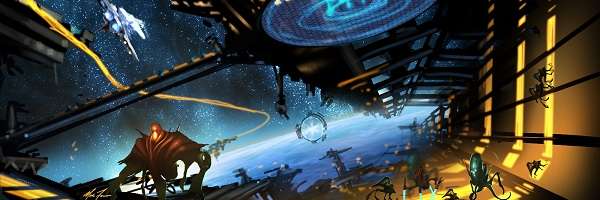
Defense Grid 2 PC Review
Time sure flies, so it’s easy to forget that the original Defense Grid – by Hidden Path Entertainment, the studio that developed Valve’s Counter-Strike: Global Offensive – first released back in December 2008. It’s crazy to think back to a time where tower defence was beginning to grow into the behemoth of a genre, with waves upon waves of clones flooding the market. What’s even more shocking to me is that it was August of 2012, just over two years ago (the same year that Double Fine had huge success with the 3,336,371 backers for their adventure game) when the developers were promoting their Kickstarter for the sequel, asking for a target of $250,000 to create more content for the original Defense Grid. While the Kickstarter didn’t get enough for a full-blown sequel, it seems that a mysterious investor helped Hidden Path Entertainment make it a dream to release Defense Grid 2. Here we are with the sequel, and I can completely and utterly tell you with 100% confidence that this is more Defense Grid.
That statement above truly is the case. The things that are going on in Defense Grid 2 are concepts that have been in the tower defence genre for years now, but the original game was a lot of fun and this sequel takes that and refines it more to produce a game that really gets the core concept of tower defence right, and it doesn’t care about showing that off, as I’m sure if this game could talk it would be screaming out “I AM TOWER DEFENCE AND PROUD!”
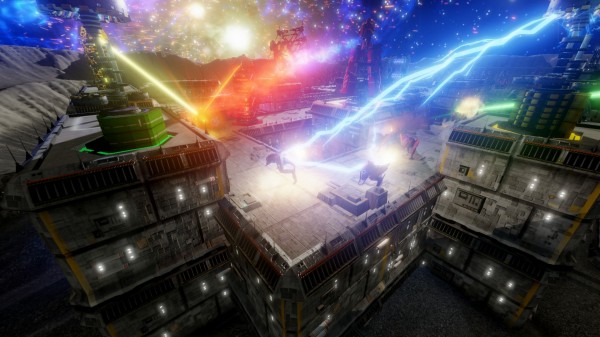
Tower defence as a genre is quite self-explanatory, but if you don’t know, then the simple explanation is that waves upon waves of enemies follow a strict path towards a base to either harm it, or in the case of Defence Grid 2, steal energy cores and take them back to the doorway they emerged from or to another specialised exit. Your task as the player is to stop them by placing down towers by spending cash you are rewarded for killing the alien critters. That’s pretty much it, and Defence Grid 2 doesn’t reinvent the genre, but instead makes it more manageable. These types of games are known for having their short comings and frustrations, and Hidden Path Entertainment have come up with a way to eliminate the frustration that happens when designing the wrong defence and suffering the consequences down the line. We have all been there, so it’s great to see a studio come up with a neat solution for this.
The weakest aspect of Defense Grid 2 is certainly the story. There is nothing going on here that requires any attention from the player. The player takes the role of a Commander, while the AI from the first game is now part of a group of AIs that banter about random topics, such as raspberry lollipops, while you, as the Commander, have to carry on with your tower placement as you listen to such nonsense. I can only positively tell you that the story is about stopping aliens stealing cores, because I cannot break the rest of the chatter down into understandable sentences. I do have to give it one thing though, it may be nonsenses, but when the faceless AIs aren’t being annoying, they can sometimes be entertaining enough to create a reaction. Let’s be honest though, I am sure that anyone going into Defence Grid 2 isn’t expecting to be met with a great story.
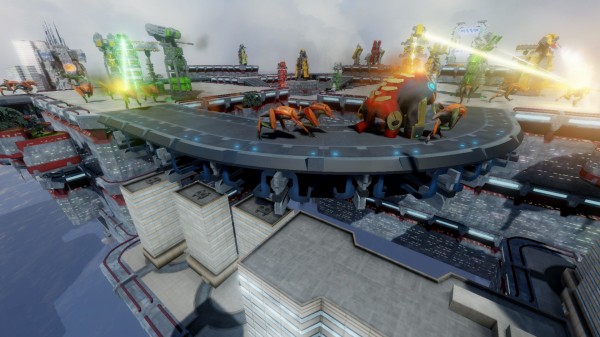
Defense Grid 2 is packed with various modes for single and cooperative action. The story is probably the place where most will begin their tower planting journey. Starting on the normal difficulty is a bit of a bore, because the first six missions pose zero problems. I am talking walk in the park stuff here, as those beginning levels feel like they are there to let you get the hang of the game. Once past this point, then the difficulty finally does increase to what I would say normal, with the base having a chance to lose some cores to a sneaky alien who has managed to make it through your path of destruction. Two more difficulties are available, but jumping on hard half way through the campaign was met with some shocking results – those aliens mean business when they are buffed with more health. It felt like normal mode was taking baby steps, and hard was a wakeup call with a slap to the face to bring me back to reality that I kind of suck at future proofing my defences.
Towers can be seen as the characters for a tower defence game. They are your way to keep surviving and fending off the evil aliens. Defence Grid 2 features ten towers, with all of them returning from the first game in one form or another, along with bringing their advantages and disadvantages to the battlefield. Guns are the cheapest towers that are used in the beginning to bring general defence, while turrets, like the Laser, are good for dealing damage after the aliens are out of range. The more expensive towers, such as the meteor that launches fiery artillery, are great for covering huge areas of the map and dealing good damage. Every tower can be upgraded twice, with each upgrade costing more than before, but coming with improved stats and a change of colour to signal that this tower has been buffed to killing machine status.

Boost towers are a new feature that takes the command tower concept from before and twists it by giving options to the player in how to use them. At basics, a boost tower can be used as a wall to block off pathways and extend the length the aliens have to travel to reach their target. These towers also give elevation to any tower that is placed on top of it, giving an advantage to look over raised land and improve the tower’s line of sight. In addition to those basic benefits, boost towers come with various options to buff the tower placed on top, such as increasing the damage output, disrupt shields and reveal stealth cloaked aliens. This, of course, costs money, but the boost towers are highly recommend units that help a lot. These are a must to master in the higher difficulty settings.
Relating to every tower’s advantages and disadvantages are the properties of the aliens. The beginning brings small units that can’t take much of a pounding, but later on the aliens begin to increase in size, cloak themselves, travel in armoured vehicles or release boss aliens that take a huge amount of punishment before they even begin to show a crack in their defence. The importance of the layout of your towers is very critical when you have to deal with the variety of alien units sent your way. Alien designs are varied enough to be able to tell them apart, but more often than not I found myself having the camera zoomed out fully so that I could see the entire map, but this means the aliens end up being small blotches, with only shielded or larger than normal aliens being distinguishable at that height.
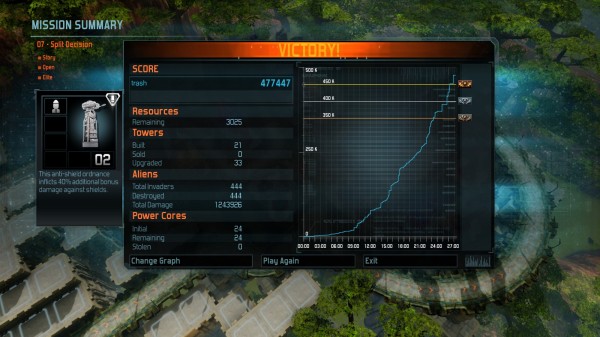
The later missions can come with a rude awakening when you have focused too much on the wrong towers, suddenly seeing your base missing a few cores. Thankfully, mistakes can be corrected by using a new feature that allows the player to jump back a wave with the press of a button. This ability even allows you to keep going back each wave until you feel you are satisfied to continue from that point in history and correct your tower design layout, because you now have the advantage of knowing what’s coming in the future. It stops the repetition of having to attempt the entire mission again. There is nothing worse than getting to wave 29 of 30 and finding out that there is a huge flaw in your line of defence. This is the Race Driver: GRID rewind system of the tower defence genre.
Story mode includes cooperative play, but to be honest, it doesn’t feel unique and comes across like a poor attempt at adapting the single player. If you begin a fresh story together, then the game feels like all you are doing is bringing another cursor into the game, since the resources are shared between each other. It’s not until later on where each player unlocks profile specific upgrades on towers that the two players begin to see the small advantages of cooperative play – each player eventually finds their role in regards to what towers they will build, as the person with the best buff on a specific tower will be in charge of building that tower in the mission. An inferno tower might do 20% damage for one of you, while the other player might have gained a bigger firing range for the cannon. These buffs, along with what AI specially ability should be brought into the stage – examples like a laser beam strike from above for instant death or a buff to towers within a certain radius for 20 seconds – become the primary motivation between the two people playing the game. It might be the smallest of differences between playing single player and cooperative, but it just about scraps enough to make cooperative fun. There is a non-story cooperative mode called Coordinated Defense that splits the map into two colours, each one based on the player, and only that player can build in that zone and must manage their own resources. This is a much better cooperative mode than the story version, even adding that competitive edge by trying to prove to your buddy that you are a better defender than them.
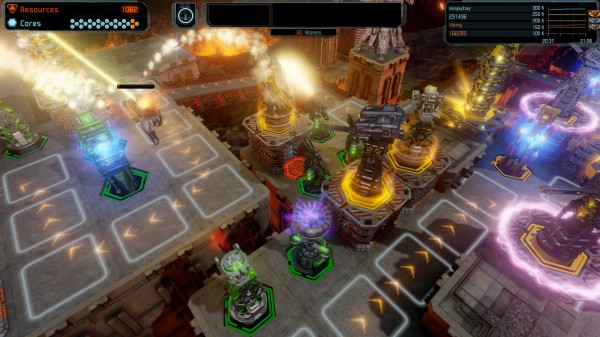
As far as content goes, you are spoilt for choice after beating the story mode. There is a map creator, dubbed DGArchitect that uses Steam workshop, meaning it’s extremely easy to find someone’s map and download it into your game or make your own and share it with others. It’s advertised that these are the tools the developers used to create the game’s existing levels, so there’s power in them to create some truly great and challenging layouts. A versus mode puts an interesting twist on the gameplay. Each player begins with the same map, but when someone kills an enemy, it teleports to the other map in the same location with extra health, causing a sort of back and forward balance of alien invasions between the two players. All 20 maps from the campaign can be used in the other modes that modifier the gameplay, such as locking the ability to upgrade towers or not being able to sell them. All these modifiers have their own leaderboards, so with all maps, modifiers and modes, you can just imagine the amount of leaderboards there are for this game. If you are a score freak, then this will be like a paradise for you.
Presentation is mostly good, especially when everything is activated and lights are blinking, lasers are glowing and explosions are blowing all over the map. It’s not a graphical beast, but the graphics are good enough to give you a nice representation of what is going on. I do find the menus to be awkward, because weird things relating to the console port creep into the PC version, such as clicking on an empty space to build a tower that locks the mouse to an vertical axis while selecting which tower to build from the popup menu. It feels lazy to have kept that in when the player has mouse controls. The main menus use a view that causes them to slide left and right for setting various game options, which I find rather counterintuitive.

What I said at the start is really the same thing I will say here – Defense Grid 2 is more Defense Grid, meaning that this is one of the better entries in the genre that you can currently pick up on Steam. It brings back everything fans liked about the first title, while coming up with mechanics that ease the stress of failure that can come with the genre. It might be thin on story and full of bizarre chatter, but solid mechanics and great game modes make this a jolly great time for anyone with an interest in towers, defence or raspberry lollipops.
